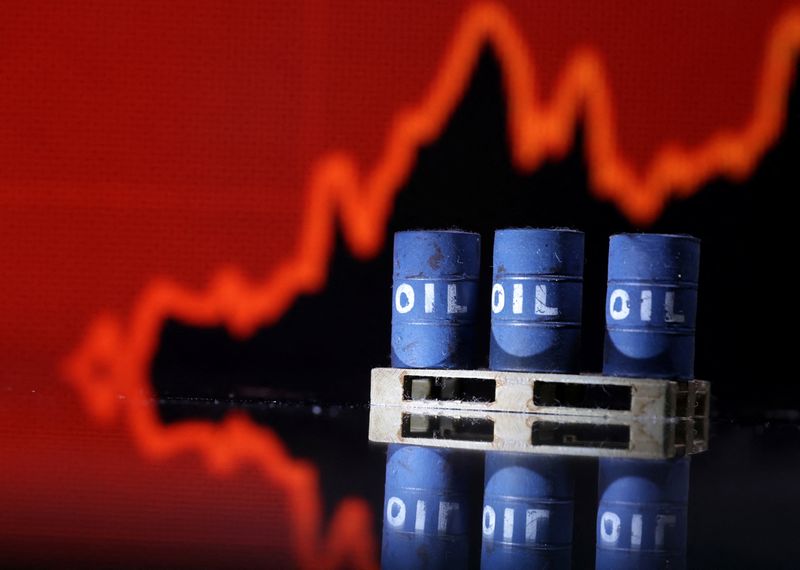
Investing.com– Oil prices rose Monday, gaining back some ground after three straight weeks of losses ahead of more cues on U.S. interest rates and demand forecasts later this week.
At 08:25 ET (12:25 GMT), rose 1% to $80.43 a barrel, while rose 1% to $76.31 a barrel.
OPEC report awaited for more cues on demand
Crude is attempting to make a comeback Monday after falling to four month lows last week in the wake of the Organization of Petroleum Exporting Countries, and allies, a group known as OPEC+, raising the possibility of scaling back some voluntary production cuts later this year
With this in mind, the early focus this week will be on Tuesday’s release of OPEC’s , with the cartel’ scheduled to provide its outlook of annual oil supply and demand.
The International Energy Agency also releases its on Thursday.
Fed meeting, inflation data on tap as dollar rebound weighs
A stronger dollar had also weighed heavily on the crude complex after Friday’s release of stronger-than-expected data had raised expectations that the Federal Reserve will stay pat on interest rates for most of this year in order to tame still elevated inflation.
The Fed is and is widely expected to keep rates steady. But any signals on rate cuts will be closely watched.
Before the Fed, consumer price index inflation data is also due on Wednesday, and is likely to factor into the central bank’s outlook.
The dollar also benefited from a drop in the , which hit a one-month low after the results of the European Union election showed a clear swing towards right-wing parties.
A stronger dollar pressures oil demand by making the commodity more expensive for international buyers.
Goldman sticks to tight range
Still, despite the numerous factors impacting the crude market, Goldman Sachs sticks to a $75-$90 a barrel range for this year.
“We still see $75/bbl as a floor under Brent. For one thing, physical demand for oil, including from China and the US SPR, tends to rise when prices fall. Second, financial demand is likely to rise substantially if currently very low
speculative positioning normalizes. Third, US supply will remain price dependent, and OPEC can delay, pause, or reverse its plan to raise production if required to stabilize the market. Moreover, OPEC’s agreement on new production baselines through 2026 signals stronger cohesion, further reducing the likelihood of much lower prices,” the bank said, in a note dated June 9.
Turning to the $90 a barrel ceiling, “OPEC has announced a data-dependent plan to gradually unwind voluntary production cuts from Q4 if the market tightens.”
(Ambar Warrick contributed to this article.)

